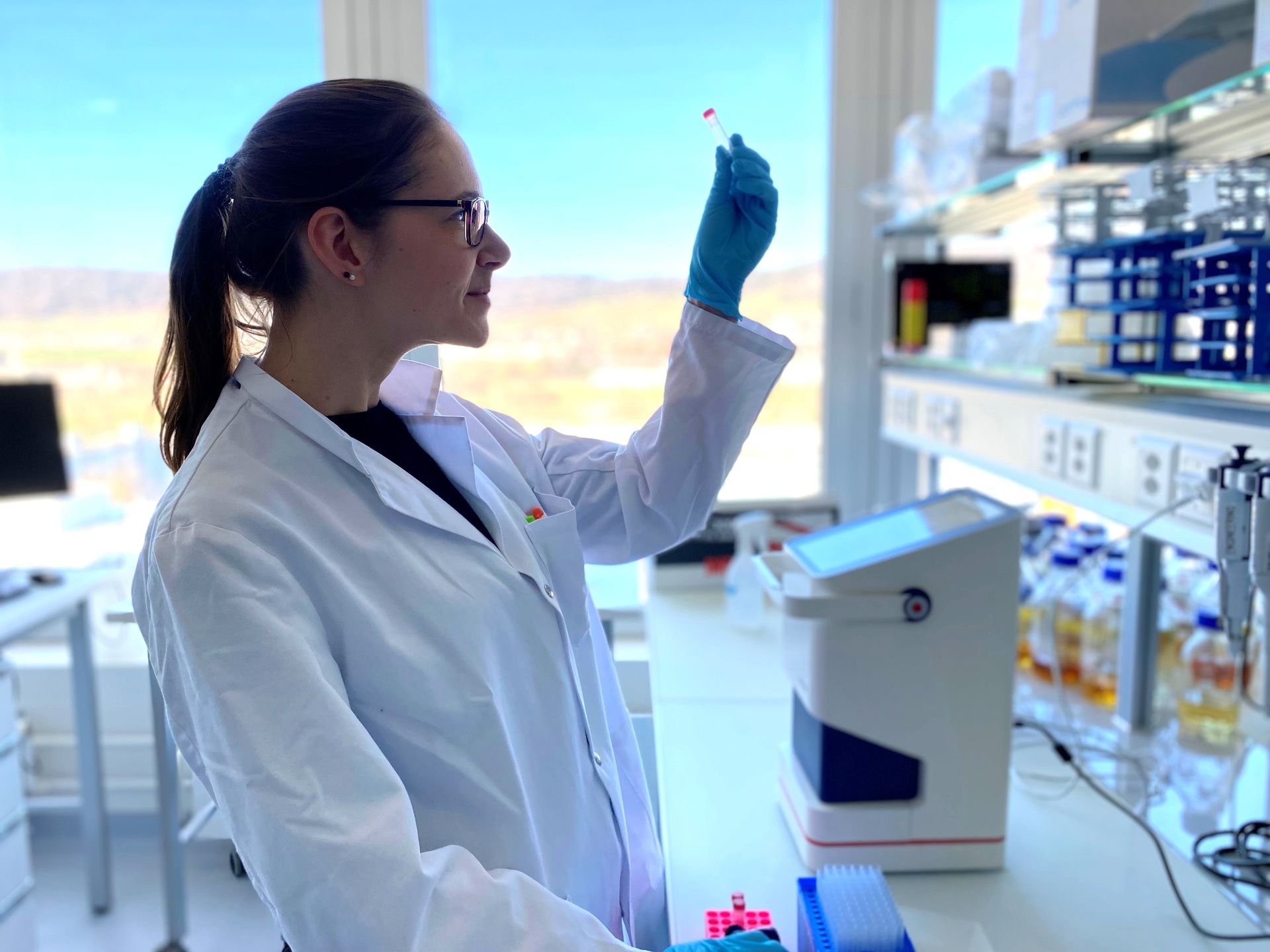Wastewater reuse is essential for making water usage more sustainable and this is becoming increasingly important in many regions. Sewage treatment plants, where wastewater is treated and processed, are places with lurking dangers such as pathogen emission. To strengthen sustainability, it is therefore necessary to ensure the safety of mankind and environment. Rapid and quantitative microbiological water analysis is thus critical for safe reuse of water.
Challenges and opportunities in wastewater reuse
In mediterranean countries and other arid areas, which are increasingly facing water shortages, treated wastewater can function as a vital water resource [1]. In Europe, 2.4% of treated wastewater is reused on average [2]. On the other hand, they utilize >85% of treated wastewater for crop irrigation in Israel [3]. At least 11% of Europeans are affected by water shortage and in the EU, 6 times more treated water could be reused than currently is. Hence, the EU is now pursuing the intention of specifically promoting water reuse (Water Reuse - European Commission).
The reuse of wastewater can pose risks such as adverse health effects due to pathogens, heavy metals, pharmaceutical substances and other synthetic compounds in the water [3]. Although the usage of treated wastewater improves sustainability in terms of water resources in agriculture, health threats might cause reluctance towards wastewater [2]. For wastewater to be reused, certain treatment steps must be carried out to reduce the concentration of pollutants [4].
As treated wastewater differs from freshwater regarding e.g. pH and salinity, irrigation with it might change physical, biological and chemical soil characteristics [3]. Nonetheless, the reuse of treated wastewater remains an invaluable alternative in regions where clean water is lacking or the access to water resources limited [4]. It is critical to only use treated wastewater if safety regarding hygiene and environment is ensured and risks for the ecosystem are eliminated [4].
Reclaimed water utilized for irrigation in agriculture must fulfill certain quality criteria. There are several categories of water quality with corresponding limit values for Escherichia coli (E. coli) and Legionella. Further, it is determined which water quality category can be used for what crops, including the irrigation method. To guarantee the required quality, microbiological monitoring of the water is indispensable [5].
Emissions from sewage treatment plants and their risks for mankind and environment
Wastewater contains substantial amounts of microorganisms which might be aerosolized [6]. Strains of Acinetobacter sp., Pseudomonas sp., Enterococcus sp., Bacillus sp., and Escherichia coli were isolated from sewage treatment plant air emissions [6]. Having said that, air-borne respiratory and intestinal diseases were becoming more frequent among sewage treatment plant workers [6].
During wastewater treatment, aerosols can be formed and Legionella bacteria transferred into the environment [7]. Contaminated aerosols might be transported for several kilometers [7, 8]. Thus, exposition towards aerosols threatens also the habitant’s health [6].
Legionnaire’s disease, a severe form of pneumonia, is mainly caused by Legionella pneumophila [7]. For several outbreaks in the Netherlands, sewage treatment plants were found to be the most likely source of infection [7].
Collaboration with the research facility KWR in the Netherlands
The water research institute KWR leads the project ‘Reliable detection and control of Legionella pneumophila in wastewater’ in collaboration with partners from industry.
In recent years, the number of patients that suffer from Legionella infections has risen in the Netherlands. The majority of these infections is caused by Legionella pneumophila and artificial water systems, like wastewater treatment plants, pose a possible source of infection. Therefore, the project aims at evaluating different detection methods for Legionella pneumophila in wastewater, together with solutions for control and mitigation.
https://www.kwrwater.nl/en/projecten/betrouwbare-detectie-en-beheersing-van-legionella-pneumophila-in-afvalwater/
How rqmicro.COUNT promotes sustainability and safety
rqmicro, a spin-off from ETH Zürich, has developed a measurement technology for cultivation-independent, rapid and accurate quantification of bacteria in water. The technology is based on flow cytometry and has the great advantage of being able to detect viable but not culturable (VBNC) cells. VBNC cells might be infectious and will be missed by cultivation-dependent tests, thus leading to false negative results. Capturing VBNC cells is particularly critical for reliable water treatment evaluation and assessing health risks.

With the portable rqmicro.COUNT instrument, flow cytometry is available on-site or in a laboratory setting and requires no additional technical expertise.
Get in touch with our sales representative for a free consultation on our solution.
References:
[1] Cirelli, Guiseppe L., et al. "Treated municipal wastewater reuse in vegetable production." Agricultural Water Management 104 (2012): 163-170.
[2] Saliba, R., et al. "Stakeholders’ attitude towards the reuse of treated wastewater for irrigation in Mediterranean agriculture." Agricultural Water Management 204 (2018): 60-68.
[3] Reznik, Ami, et al. "Economic implications of agricultural reuse of treated wastewater in Israel: A statewide long-term perspective." Ecological Economics 135 (2017): 222-233.re
[4] Galkina, Elena, and Olesya Vasyutina. "Reuse of treated wastewater." IOP Conference Series: Materials Science and Engineering. Vol. 365. No. 2. IOP Publishing, 2018.
[5] L. Alcalde-Sanz, B. M. Gawlik, Minimum quality requirements for water reuse in
agricultural irrigation and aquifer recharge - Towards a legal instrument on water reuse at EU level, EUR 28962 EN, Publications Office of the European Union, Luxembourg, 2017, ISBN 978-92-79-77175-0, doi:10.2760/804116, JRC109291
[6] Yang, Kaixiong, et al. "Airborne bacteria in a wastewater treatment plant: emission characterization, source analysis and health risk assessment." Water Research 149 (2019): 596-606.
[7] van den Berg, Harold, et al. "Legionella detection in wastewater treatment plants with increased risk for Legionella growth and emission." Journal of Water and Health 21.9 (2023): 1291-1302.
[8] Caicedo, C., et al. "Legionella occurrence in municipal and industrial wastewater treatment plants and risks of reclaimed wastewater reuse." Water research 149 (2019): 21-34.